Posted: February 12th, 2013 | 2 Comments »
Apologies, a self promoting post I’m afraid. However, Midnight in Peking has been nominated for an Mystery Writers of America Edgar Allan Poe Award that “honor the best in mystery fiction, non-fiction and television, published or produced in 2012.” Apparently it’s the 204th anniversary of the birth of Poe this year – I have no idea if 204 is auspicious or not.
I’ve been nominated in the rather oddly titled ‘Best Fact Crime’ category…and here’s the competition:
BEST FACT CRIME 2012
Midnight in Peking: How the Murder of a Young Englishwoman Haunted the Last Days of Old China by Paul French (Penguin Group USA – Penguin Books)
Devil in the Grove: Thurgood Marshall, the Groveland Boys, and the Dawn of a New America by Gilbert King (HarperCollins Publishers – Harper)
More Forensics and Fiction: Crime Writers’ Morbidly Curious Questions Expertly Answered by D.P. Lyle, MD (Medallion Press)
Double Cross: The True Story of the D-Day Spies by Ben Macintyre (Crown Publishers)
The People Who Eat Darkness: The True Story of a Young Woman Who Vanished from the Streets of Tokyo – and the Evil that Swallowed Her Up by Richard Lloyd Parry (Farrar Straus & Giroux Originals)
They’re announced on May 2nd so we’ll see if a trophy is forthcoming – if not prepare for one of those “it was great simply to be nominated” blog posts
You can see all the categories and nominees here

Posted: February 12th, 2013 | No Comments »
Jukong Road and Jukong Alley (often spelt Ju Kong) were once legendary names in Shanghai. Consider this enticing description from 1936’s Shanghai: High Lights, Low Lights and Tael Lights, the wonderfully irreverent guide book to the city’s seemier side by Maurine Karns and Pat Patterson:
Just the other side of the Settlement gate, and in the Chinese late-closing area, is Jukong Alley, scene of the Venus Cabaret, already described. Here are probably the greatest collection of honky-tonk cafes ever assembled on one street. Most of them are Russian, some are Japanese, all of them something extra special in what the Well Dressed Man is avoiding this season. That is, outside of the Venus, and an especially choice resort, called the Red Rose, quite popular with the Russians.
Just beyond the Settlement boundaries (and with dubious police control), in the so-called Northern External Roads was Jukong Road (now Zhongxing Road). It has seen a lot of redevelopment since 1936. First the Japanese bombed the hell out of the area around the Shanghai Railway Station and destroyed many of the buildings. Since then of course that area of Hongkew up past the old Paoshan Road (Baoshan Road) and the new look railway station has been further redeveloped with blocks of flats and some rather ugly cement block buuldings. The street, now widened and shortened is rather nondescript with drab 1950s workers blocks, 1990s wanna-be middle class compounds and non-architecture architecture of the grey block variety.
However, it was once vibrant. As well as the nightclubs drawn to the illegality of the area there were some legitimate and well known businesses – I’ve blogged before about The Teddy Bakery for instance. There was also quite a lot of traditional low level lilong residences on the street and some did survive both the war and the initial waves of Shanghai’s “redevelopment”. However, a stroll along the street today (which is now truncated at the eastern end (towards Sichuan Road North, which has still has some nicely restored properties in the vicinity, and no longer crossed by the railway line as it used to be – though the site of the old Tiantong Railway Station is commemorated with a plaque) reveals that the few remaining older residences are mostly now slated for demolition. Once these go Jukong Road will be completely obliterated effectively except for a few, still quite charming lanes (as shown in the third picture below).
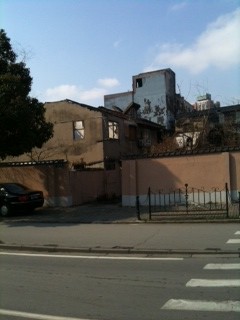
 a block facing Zhongxing Road coming down…
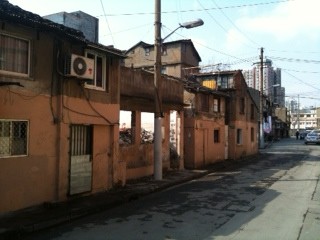
A larger lane that is also in the process of demolition…
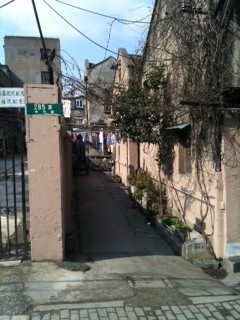
One of just a handful of the smaller lanes left that appear safe for now.
Posted: February 10th, 2013 | No Comments »
A gorgeous new book and DVD has been published around the 1919 Alla Nazimova/Noah Beery film The Red Lantern (which included Anna May Wong’s screen debut when she was just 14, though she’s uncredited and you have to look hard). Apparently only one print remains in existence and it’s been cleaned up for this DVD release. the story is good old fashioned Yellow Peril Chinoiserie of the highest order – in China, a half-Chinese, half white woman falls in love with a missionary’s son. When he rejects her for an American girl, she joins the Boxers in order to avenge herself on the white race. The film was a sexy shocker at the time – all that Orientalism combined with the oh so Russian Nazimova (about who rumours swirled of her sexuality). The book includes essays on the boxers, western interpretations of 1900 and the traditions of “yellow face” and white actors playing Chinese. Lovely bit of packaging too.
Available from Amazon or direct from the publishers

“Presenting The Greatest Actress of the Day, NAZIMOVA, The Star of a Thousand Moods.” (Auckland Star, 24 August 1920)
The Red Lantern tells the story of a Eurasian, Joan of Arc-like heroine, set against the background of China’s 1900 Boxer Rebellion. The film was an instant success, thanks to an unprecedented advertising campaign and the star qualities of diva Alla Nazimova. Both aspects are extensively discussed in this publication.
In the book, essays sketch the historical outline of the Boxer Rebellion, while special features on the DVD include early cinematic actualities that evoke the way in which the Boxer Rebellion was portrayed in the Western media around the turn of the century, true to the myth of the ‘Yellow Peril’. Popular photo and theatre plays of the day thrived on Oriental stereotypes and relied heavily upon exotic set designs and costumes. Famous actors of European descent, wearing ‘yellow face’ makeup explored the exciting dangers of interracial love.
Extras on the DVD tentatively reconstruct a Chinese programme from the time of the film’s premiere and show how ‘authentic’ portrayals of Chinese life were combined with cartoons and Oriental musical fantasies. Many contemporary film reviewers saw The Red Lantern as a film marked with the “stamp of historical and ethnological authenticityâ€, thanks to Nazimova’s mastery of the art of metamorphosis. The different emotions that Nazimova’s face and eyes could express became legendary in trade magazines and were documented in newsreels, included in the extras, which were shown in cinemas all over the world.

Posted: February 10th, 2013 | No Comments »
A lot of flying as ever in 2012, and a lot of hospital visiting too I’m afraid, so let’s not forget some of the more memorable pulps and series as I ploughed last year. Like many people, apparently, I do most of my pulp reading on Kindle (other e-book formats are available!) and, again apparently like most people, I do find I’m buying a lot to try and then ditching the dross and keeping with the good stuff. So this is not an exhaustive list but a sample of the one’s I thought worth a go…

The Broken Shore – Peter Temple – the Australian crime writer Temple has been a major new find for me in 2012. Broken Shore is a fantastically written Aussie noir in suburban Victoria and I promise if you like him you’ll head back to the bookshop or internet and get everything else he’s done. I’ve gone on to read the Jack Irish series starting with Bad Debts which is more traditional and less literary than Broken Shore, but still good and Melbourne-based – apparently they’ve made them into a TV show with Guy Pearce, which sounds all right by me.
Blue Angel, White Shadow – Charlson Ong – Ong is the outright champion of dark noir in the Philippines. See my longer review here.
Live by Night – Dennis Lehane – Lehane’s long reaching story of one American criminal and his rise and fall. Follows on nicely from his previous The Given Day which was also excellent
The Expats – Chris Pavone – a bit of a phenomenon this one with a massive marketing camapign and all that 20p on Amazon stuff, but a decent enough thriller about American ex-pats in Luxembourg and Paris.
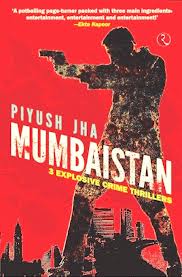
Mumbaistan – Piyush Jha – discovered this on a trip to Mumbai at Christmas and not sure how you get it outside of going to Bombay and buying it – however Jha, a Bollywood script writer, has created a great sense of the sprawling and (for non-Indians) almost impossible to decipher Indian gangster-class in three novellas.
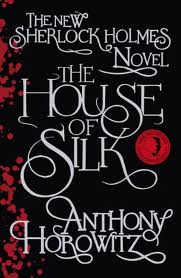
Anthony Horowitz did a fantastic job with Sherlock Holmes in The House of Silk. Great to see an active Watson and the Baker Street Irregulars too. A nice mix of classic Holmes style with issues in Victorian London too nasty and depraved for Conan Doyle to have ever touched on openly.
Spade and Archer – Joe Gores – what did Sam Spade get up to before Dashiel Hammett created him! Nice sense of 1920s San Francisco and a good read for any Hammett fans who love The Maltese Falcon etc.
Kiss Me Quick – Danny Miller – the first in what is expected to become a series about Vincent Treadwell a detective working in 1960s Brighton. This, the first, harks back to the classic crime-ridden Brighton of the 1930s – Sabini’s, razor gangs, race track crime etc etc. Not bad but you’d do best to read Graham Greene’s Brighton Rock if, by some horrendous accident of history you have not already.
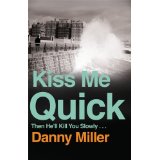
The Shadow of the Serpent – David Ashton – the first in what could turn out to be an interesting series of darkly Gothic Edinburgh (Leith technically) set novels featuring the rather uptight but deasd hard and determined Inspector McLevy. They’re set in the city in the 1880s and, this one at least, is a Jack the Ripper like hunt through the bowels of the old town.
Deadlight – Graham Hurley – I’m working my way through Hurley’s DCI Joe Faraday novels set in and around Portsmouth. I’m a fan and have enjoyed each one and I’ve got a few to go yet – the latest Happy Days is out now and I just read Blood and Honey which takes in drugs, violence and illegal immigrants on…the Isle of Wight!
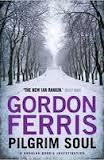
Glasgow times – I’ve also got to keep plugging Gordon Ferris’s Brodie series set in just post-War Glasgow – tough and gritty and nice descriptions of the city and the West of Scotland, the second came out this year, Bitter Water. Then, just in time for Christmas, the third, Pilgrim Soul appeared – the best of the lot so far.
Lynda La Plante’s Anna Travis series keeps on being gripping – Blood Line was a great missing person case with side trips to Cornwall and druggy surf culture.
And David Downing’s Berlin stations series featuring the American journalist John Russell now moves beyond wartime Berlin to war-torn post-war Berlin pre-division. Still going strong as a character and series I reckon, Lehrter Station was a good read
Posted: February 10th, 2013 | No Comments »
Before we get too far into 2013, and following on from my half-year round up, here’s what I thought worth reading fiction-wise in the second half of 2012:
Mission to Paris – Alan Furst – As ever Mr Furst is firing on all cylinders with his evocation of pre-WW2 Paris and a visiting Hollywood film star caught up in espionage. For my money Furst remains the preeminent spy writer with his always excellent evocation of pre-war Europe.
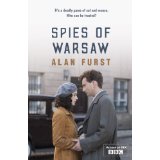
Toby’s Room – Pat Barker – Barker continues to milk the Great War generation. This one continues again themes she’s explored before – what the trenches did to that great and talented pre-war generation, the role of the Slade Art School in particular and here also weaving in the true story of the Slade students who sketched the horrific injuries that resulted from the conflict. Familiar ground and well trod but always readable.
Sweet Tooth – Ian McEwan – I’m hit and miss on McEwan – loved Atonement and others though Saturday remains for me the worst novel of recent years for its moronic depiction of working class Londoners. Still, here McEwan is on better ground with a back and forth spy story set in the 1970s – the recruitment scenes are by far the strongest.
The Girl on the Stairs – Louise Welsh – I’m a fan of Welsh, she is a master of the set scene as she showed in previous novels (see her antique traders in a Glasgow pub scene in Naming the Bones as a masterclass). Here she returns to Berlin, a city she’s written about before (all the grit of her native Glasgow but with a little more mysteriousness) for a tale that sees a British ex-pat caught up in Berlin’s past.
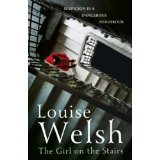
Dare Me – Megan Abott – I loved Abbott’s noir style books (and hope she does more) and The End of Everything. I then got to meet her and be on a panel with her in Adelaide this year and we got on like a house on fire. But I wasn’t overly convinced I’d like Dare Me – the tale of the shady and sordid goings on in a suburban American High School girls cheerleader team – a wee bit out of my scope of cultural references that! However, Abbott’s writing is so toght and great she carries you along and it’s another great book – about time Ms. Abbott won some awards I me thinks!
The Shameful Suicide of Winston Churchill – Peter Millar – a cracking, one sitting of a read. Counterfactual history with Churchill disgraced, London conquered by the Russians after WW2 and now a divided country (everything north of Bedford is sort of West Germany, everything south like the GDR) and London is divided into a West and East with those in the East stuck in a North Korean (and, naturally as this is London, Orwellian) state. But worms turn – very enjoyable.
Istanbul Passage – Joseph Kanon – Kanon is a massively popular writer but new to me. His just post-war Istanbul here is reminiscent of the Eric Ambler’s in his classic Journey into Fear. Spy goings-on allow for descriptive passages of the great city, the new Cold War mentality and one man’s largely accidental role in it.
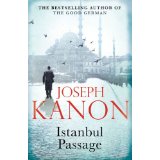
NW – Zadie Smith – I inwardly groaned when I heard Smith’s new book was more North West London nostalgia, but it has to be admitted she does pull it off. She captures the character types and rhythms of the area brilliantly and interweaves the stories of a disparate group of inhabitants. Anyone who thought too much gadding about in New York has blunted Smith should read this.
The Harbour – Francesca Brill – the story of Emily Hahn and Charles Boxer retold in novel form. I wrote a slightly longer review of this and the problems with the Boxer as collaborator trope here.
Before the Poison – Peter Robinson – The creator of the Inspector Banks series (which I always note in my review of the pulps) writes a different sort of story. I haven’t much liked Robinson’s non-Banks work previously but this is a good story looking back on a woman’s mysterious life and with a little Singapore internment thrown in for good measure – hence a slightly longer review here.
The Melrose novels – Edward St Aubyn – it took me a while to get around to reading these books as I thought they’d be too much about posh people. They are, but they’re brilliantly written – Never Mind, Bad News and Some Hope. Patrick Melrose is at once witty and idiotic, stupid and clever, lovable and horrible.
Posted: February 9th, 2013 | No Comments »
Chinese new year…snakes and all that malarky…but at China Rhyming it’s an excuse to print another Chinoiserie poem for you holiday delectation…..this time Mr WB Yeats and a snippet of Chinoiserie from his poem Nineteen Hundred and Nineteen, first published in 1921. You can read the whole thing here if you like.
Loie Fuller, the way, was a real dancer and a pioneer of modernist dance techniques in America and a big success in Paris. I’m not quite sure whether she actually had any Chinese dancers or danced in a Chinoiserie style but anyway…

When Loie Fuller’s Chinese dancers enwoundÂ
A shining web, a floating ribbon of cloth,Â
It seemed that a dragon of airÂ
Had fallen among dancers, had whirled them roundÂ
Or hurried them off on its own furious path;Â
So the platonic YearÂ
Whirls out new right and wrong,Â
Whirls in the old instead;Â
All men are dancers and their treadÂ
Goes to the barbarous clangour of a gong.
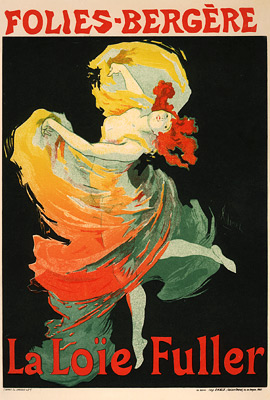
Posted: February 8th, 2013 | No Comments »
This event was originally planned for last December but unfortunately I had to cancel due to a family death and quick dash to London. However, the good people at the Jewish Historical Society of Hong Kong were kind enough to reschedule and now we’re on for 28th February….
Recovering Lost Jewish Lives in China: Yiddish Tears on the Bubbling Well Road
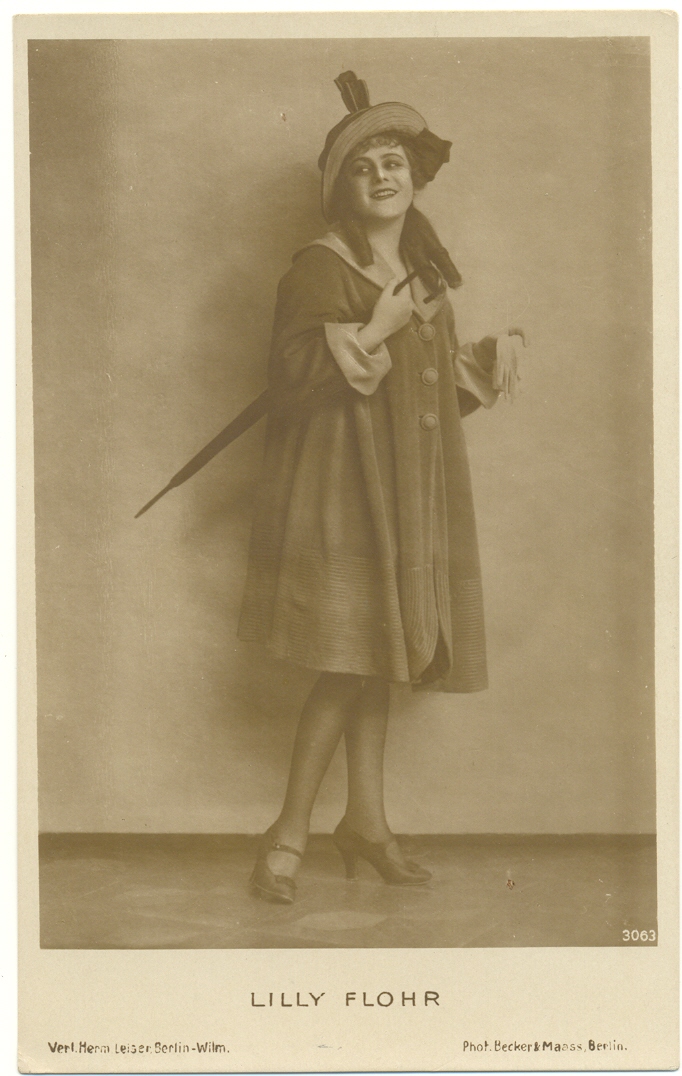
We are pleased to host a talk by author Paul French, who participated in the recent Hong Kong International Literary Festival where he presented his novel “Midnight in Old Peking”. While researching for this book, French came across some interesting stories, quite unrelated to his subject, which he felt deserved to be told.Â
Hardoon, Sassoon, Kadoorie, Ezra… all familiar names whose histories are well documented, but what of those less dramatic Jewish lives, what of those Jews in China who remained largely anonymous or lived on the fringes, in the margins or among the underbelly?
This talk will focus on those Jews in China, lost but perhaps glimpsed in new research, including where they danced all night in the 1940s Shanghai Ghetto; how Eliza Shapera was trafficked from a Bessarabian shtetl to a Shanghai bordello — and then murdered; how Mr. Kahn ended up in the Russian-Jewish slum of Yang-I-Hutung in Peking; how Joe Farren ran away from Vienna’s Jewish ghetto, nearly became Shanghai’s biggest gangster and married Shanghai’s “Josephine Baker”; and why grown men cried when Lily Flohr (above) sang in Yiddish on the Bubbling Well Road.
Join us to hear Paul’s account of this fascinating part of our collective history.
Date:
Thursday evening, 28 February 2013
Time:
6:45 PM for a prompt 7:00 start
Location:
Jewish Community Centre, One Robinson Place, 70 Robinson Road, Mid-Levels
Please note that visitors to the JCC are required to register at the Reception desk upon arrival.
We expect the lecture to last about an hour. Sorry, no kids under 10.
A HK$50 entrance fee will be charged and donated to the JHS Library Fund. So that we can get an indication of numbers, please reserve your place with the Receptionist of the Jewish Community Centre before 5 PM on Thursday, 28 February. She can be reached at 2801-5440 or via email at
jhshkg@yahoo.com.
Should you have any last-minute questions about the lecture, please call April on 9078-6155.

Posted: February 7th, 2013 | No Comments »
A few posts lately on various bits of Chinoisierie I keep coming across. I’ve known about the “Orientalist” Artesian Bar at the Langham on London’s Portland Place (which has won an award for the “world’s best bar”, for some time but only visited recently.It;’s called the “Artesian” as it’s built atop a 360 foot deep artesian well by the way. Former regulars with a taste for Chinoiserie such as Noel Coward and Wallis Simpson would have appreciated it.























